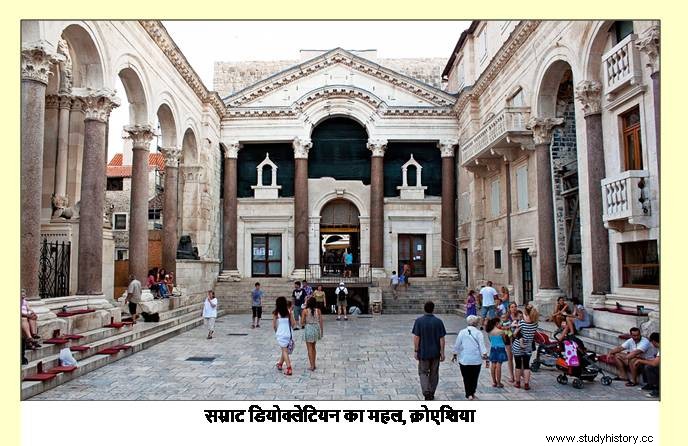
From November 284 to April 305, Diocletian became the king of Rome. He grew from a simple soldier of the Roman military to a commander in the army of Emperor Carus. After the death of the Imperator Numerian, Diocletian declared himself the ruler of Rome. Diocletian assumed the title of Augustus and made many important changes in Roman rule. He realized that many of Rome's most ambitious men wanted to become the emperor of Rome. Because of this they keep conspiring to kill the emperor.
Because of this, emperors have been killed for more than three centuries. As soon as an emperor ascends the throne, other ambitious people start trying to assassinate him. The most important role in this heinous act is played by the chief commander of the empire and the emperor's own bodyguard armies.
So Diocletian found a unique way of allowing the most ambitious people of the state to participate in the governance so that they would not have time to plot the assassination of the emperor and they were busy worrying about securing their office.
Not only this, under the new system, they should be busy in maintaining peace and security in their respective areas and focusing on the enemies attacking their respective borders. Diocletian 'Rule of the Four Kings' Created the doctrine under which two Augustus and two Caesars were appointed.
Emperor Diocletian gave himself the title of Augustus and in AD 286 appointed his old and trusted military companion Maximian as co-emperor (the second Augustus) under him. Diocletian himself began to rule the Eastern Roman Empire and appointed Maximian as the ruler of the western provinces. On March 1, 293, Diocletian appointed two nobles named Galerius and Constantius as Caesars of two different regions.
This Caesar, under Emperor Augustus Diocletian and co-emperor Augustus Maximian 'junior co-emperor' Were. Thus the Roman Empire was divided into four major provinces. After this, for all the days that Emperor Diocletian lived, he did not have to face intrigues within his kingdom. Now he could concentrate his attention on the expansion of the empire. Diocletian several times defeated the armies of the Sarmatians and the Carpi tribes who invaded the Roman Empire from AD 285 to 299.
In AD 288 he also defeated the Alamanni clan. Between AD 297 and 298, he subdued Egypt. He, together with the junior co-emperor Galerius, also defeated the Sesenid Persia and in AD 299 captured their capital, Ctesiphon.
Diocletian separated the officers of military and civil administration and created well-organized administrative governments at the center and in all the provinces. He established administrative centers at Nicomedia, Mediolanum, Sirmium and Trevorum near the borders of the Roman Empire, so that the border subjects could be given good administration.
In AD 297, Diocletian increased the taxes on the subjects and imposed uniform taxes on all subjects so that the army fighting on different fronts and the construction work going on in Italy could get continuous revenue. He built a grand capital for himself in Croatia.
Thus Diocletian was able to remain the ruler of Rome for more than 20 years by making a three-tier system of emperor, co-emperor and junior emperors. He died at the age of 67. Maximian also ruled Rome for about 19 years. Diocletian and Maximian had almost the same period of death.
